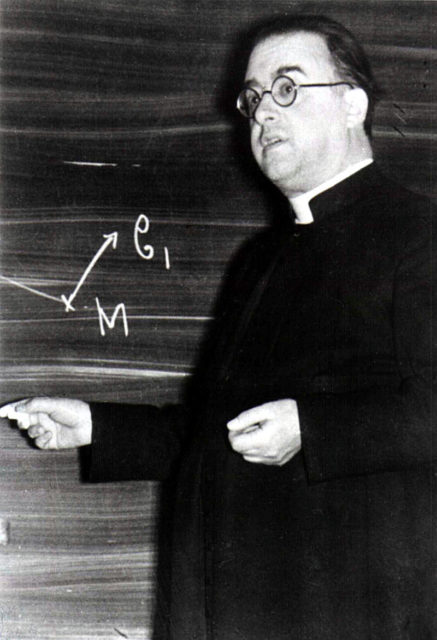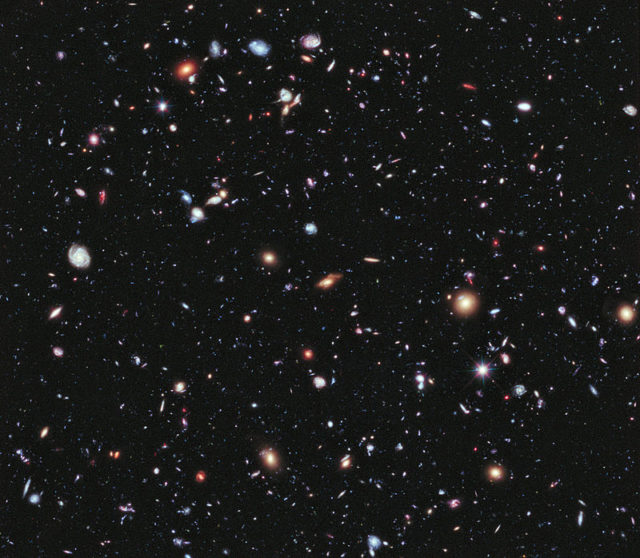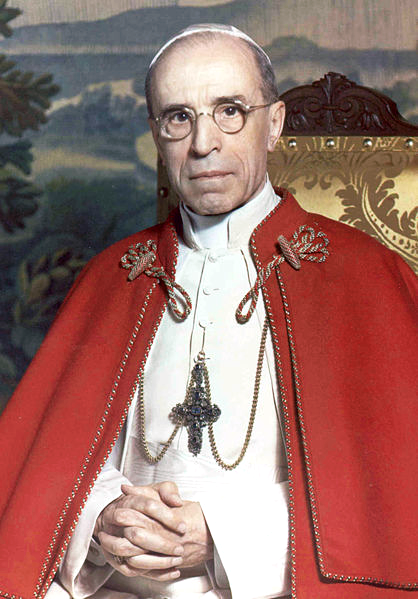The Big Bang model has been the prevailing theory of the origin of our universe for the past 50 years. Today’s scientific community supports the idea that the universe is expanding and that it, in simple terms, began with the rapid expansion of a hot and dense primordial singularity. The universe we now know formed over the following 13.8 billion years.
Most people believe that the seminal astronomer Edwin Hubble was the pioneer in early research on this breakthrough. In 1929, Hubble’s research on the increasing distances between galaxies showed that the universe is expanding and this fact became the foundation of the Big Bang theory.
Although Hubble played the crucial role in proving the notion that the universe is expanding, he was not the first scientist to propose the idea of an expanding universe. This idea originated with Georges Lemaître, a prolific Belgian astronomer, and physicist who also happened to be a devout Roman Catholic priest.

Lemaître was born in 1894 and attended the engineering school at the Catholic University of Louvain, but his education was interrupted by the beginning of World War I. He became a priest after experiencing the horrors of trench warfare as an artillery officer in the Belgian army. After the war, Lemaître continued pursuing a career in physics and astronomy. In the early 1920s, he earned a graduate degree in astronomy from the University of Cambridge and a doctorate at the Massachusetts Institute of Technology.

Throughout the 1920s, Lemaître researched Einstein’s general theory of relativity, proposed in 1917. At that time Einstein’s hypothesis of a finite-sized static universe with no beginning was the widely accepted cosmological theory. In 1929, Lemaître published a paper in which he argued that Einstein’s calculations actually proved that the universe is expanding. He expanded his research in the early 1930s and stated that these calculations hinted at the possibility that, before the birth of our universe, all matter, energy, and mass in the universe were contained within a single infinitesimal point which he named “the primeval atom.”
Many people might expect that the religious authorities of the Catholic Church reacted negatively to a priest being heavily involved in the scientific research on the origins of our universe. However, the reality was quite different. Einstein’s hypothesis of a finite-sized static universe didn’t correspond to the Catholic view on cosmology because it implied that the universe had no beginning. On the other hand, Lemaître’s theory appealed to the Church, because it implied that something existed prior to our universe and that some kind of force was needed for the universe to form from the primeval atom.

The Catholic Church embraced Lemaître’s theory as proof that the birth of our universe was the work of God, the Prime Mover. In the early 1950s, when the Big Bang theory gained prominence in the scientific community, Pope Pius XII publicly favored the theory and stated:
“It would seem that present-day science, with one sweep back across the centuries, has succeeded in bearing witness to the august instant of the primordial Fiat Lux (Let there be Light), when along with matter, there burst forth from nothing a sea of light and radiation, and the elements split and churned and formed into millions of galaxies.Thus, with that concreteness which is characteristic of physical proofs, science has confirmed the contingency of the universe and also the well-founded deduction as to the epoch when the world came forth from the hands of the Creator. Hence, creation took place. We say ‘Therefore, there is a Creator. Therefore, God exists!’ ”

Many Catholic astronomers and physicists, including Lemaître, objected to the Pope’s statement because it relied on an unconfirmed scientific theory to praise the existence of God. Although Pope Pius XII continued to praise the Big Bang theory, he refrained from praising it in public.
Lemaître remained a devout Catholic for the rest of his life and stated that the Big Bang theory was only a part of the scientific search for cosmological truth and that it cannot be seen as a proof of the existence of God. He also stated he would continue believing in God even if the theory turned out to be wrong.
